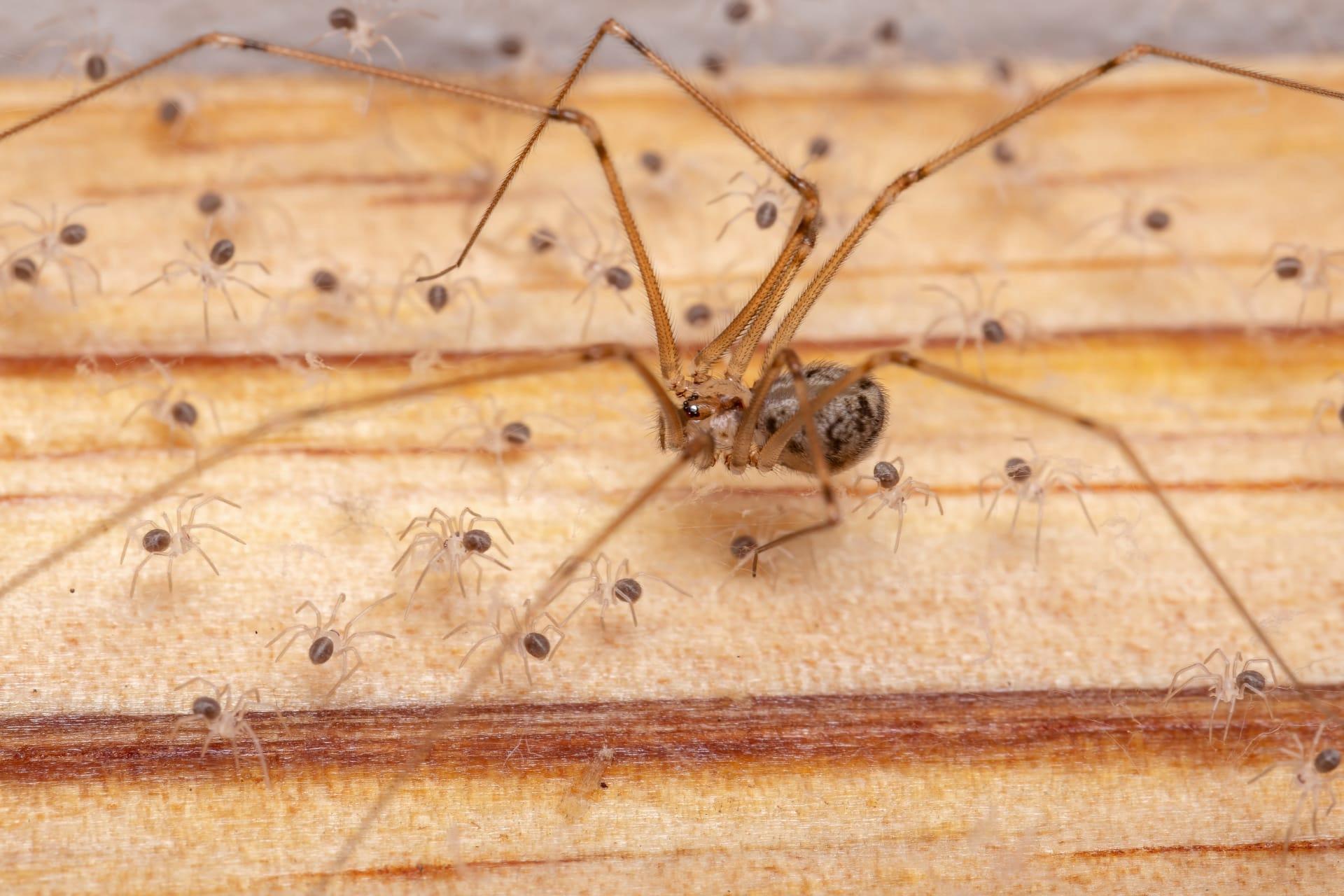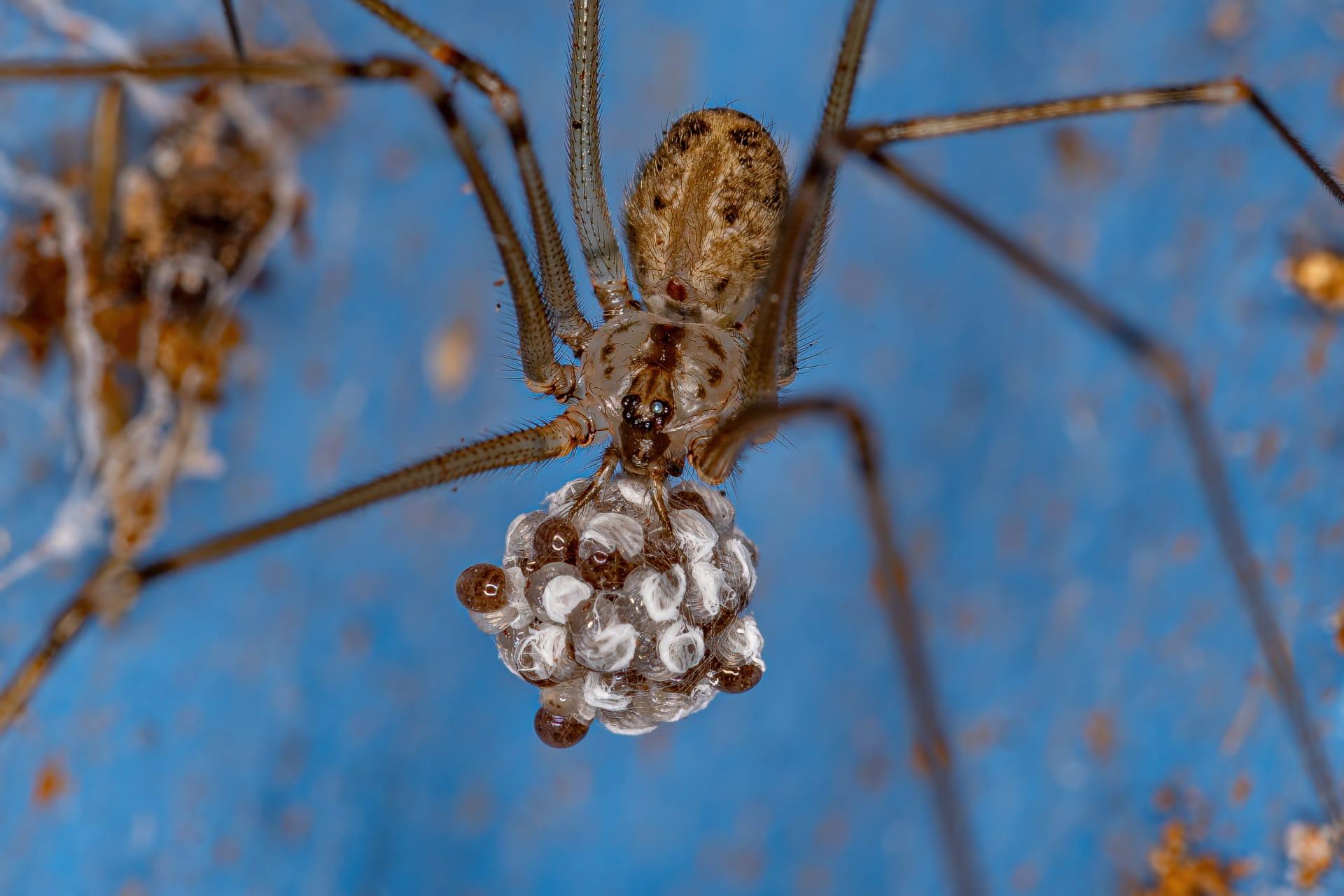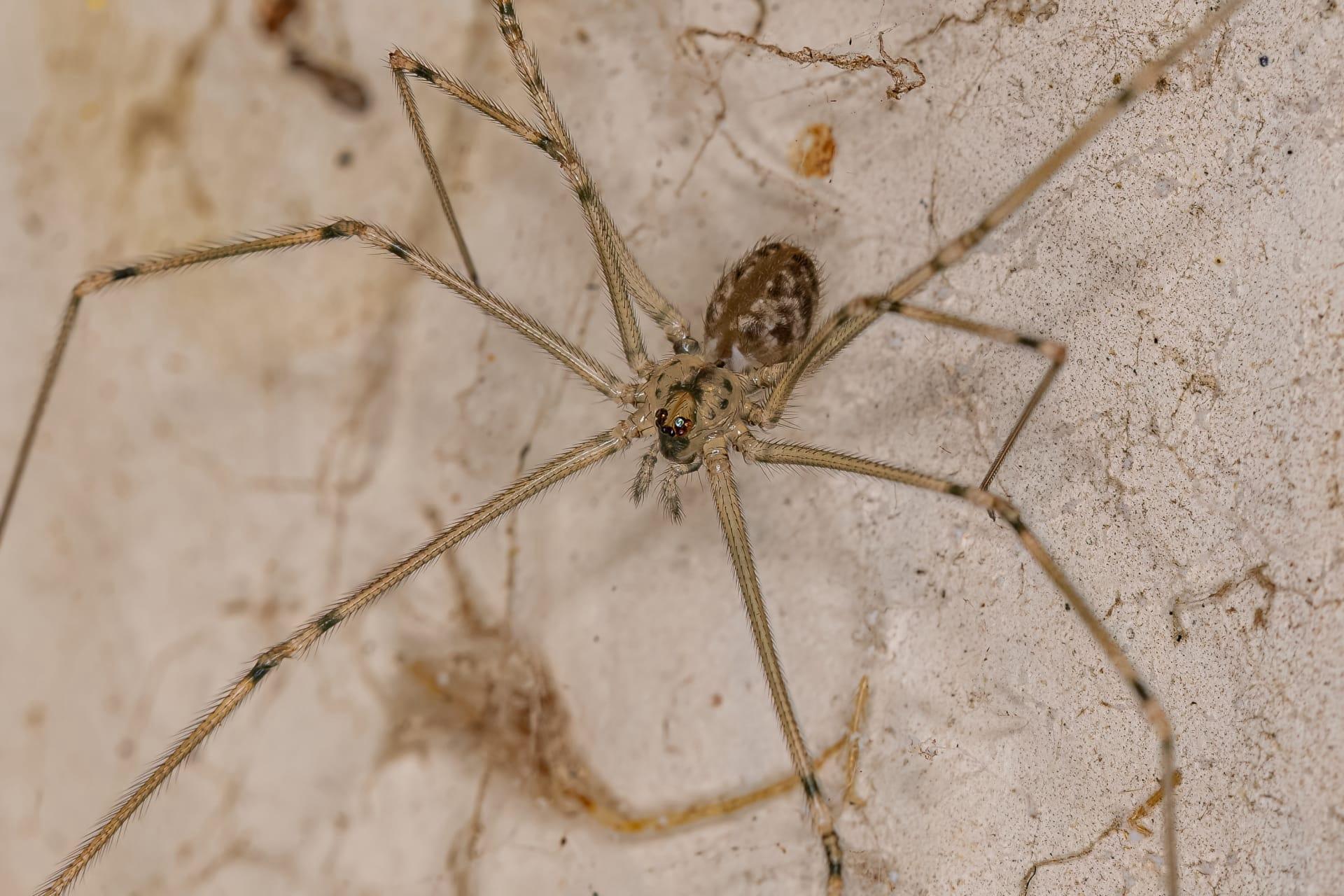Cellar Spider
- Home /
- Mini Encyclopedia /
- Animal /
- Cellar Spider
1
Cellar spiders, scientifically classified in the family Pholcidae, are a fascinating group of arachnids. This family contains over 1,500 species, with the most common genus being Pholcus. These spiders, often recognized by their long, slender legs and small body, are a distinct group within the order Araneae. They're predominantly known for their unique web structure and their characteristic trembling behavior when disturbed.
Cellar spiders have a widespread distribution, thriving in various environments across the globe. They are particularly prevalent in temperate regions and are commonly found in both natural and urban settings. These spiders are named for their preference for dark, damp places like cellars and basements. However, they are versatile and can also be found in corners of rooms, sheds, caves, and under rocks. Their adaptability to diverse habitats has enabled them to inhabit continents worldwide, including North America, Europe, and parts of Asia and Australia.

2
Question: Do cellar spiders have the most potent venom among spiders, but their fangs are too weak to penetrate human skin?
Answer: This is a widespread myth. Cellar spiders do possess venom, like all spiders, but it is not particularly potent to humans. Their venom is primarily designed to subdue small insect prey, not large mammals like humans. Moreover, there is no scientific evidence supporting the claim that they have exceptionally potent venom. Their fangs, while small, are indeed capable of penetrating human skin, but their bites are rare and typically result in no more than a mild, localized reaction.

3
Cellar spiders have developed several intriguing survival strategies. One notable adaptation is their ability to create webs with irregular, messy patterns. These webs are not sticky but rather are designed to entangle and confuse prey. When a prey item gets caught, the spider swiftly envelops it with silk before delivering a venomous bite. This method is highly effective in capturing flying insects, which are their primary food source.
Another remarkable survival trait is their defensive behavior known as 'vibrating' or 'gyrating.' When threatened, cellar spiders rapidly shake their web, creating a blur effect. This behavior confuses predators and can make the spider appear larger or less focused, providing a chance to escape. This unique tactic is a testament to their evolutionary ingenuity and contributes significantly to their survival in diverse environments.

4
In the ecosystem, cellar spiders play a vital role as both predator and prey. As predators, they help control the population of insects, including some pests. By feeding on common household insects such as flies, mosquitoes, and moths, they contribute to maintaining a balanced ecosystem within their habitats. This natural pest control is particularly beneficial in human environments.
From the perspective of prey, cellar spiders are a food source for larger predators. Birds, larger spiders, and some species of wasps are known to prey on them. This predatory relationship highlights their position in the food chain and underscores the interconnectedness of species within an ecosystem. Thus, cellar spiders are not only important for controlling insect populations but also for contributing to the biodiversity and health of their ecosystems.

5
Film: "World of Spiders" is a documentary produced in the United Kingdom in 2018. It delves into the diverse world of spiders, with a special segment dedicated to cellar spiders. The film explores their unique web-building skills, hunting techniques, and survival strategies, offering viewers an intimate look at these often misunderstood creatures.
Book: "The Secret Life of Spiders" by Peter J. Bryant, published in the United States in 2020, is an enthralling exploration of the world of spiders, including a detailed chapter on cellar spiders. This book sheds light on their biology, behavior, and ecological importance, presented in an engaging and accessible manner.
Book: "Arachnid World: Cellar Spiders" by Grace Hansen, published in the United States in 2019, is a comprehensive guide to cellar spiders. The book offers insights into their life cycle, habitat, and survival strategies. Hansen's work is particularly noted for its detailed photographs and easy-to-understand explanations, making it an excellent resource for both spider enthusiasts and general readers.